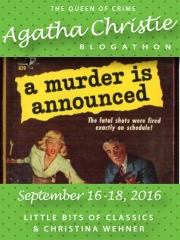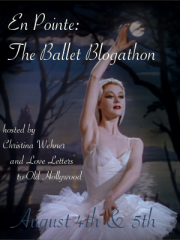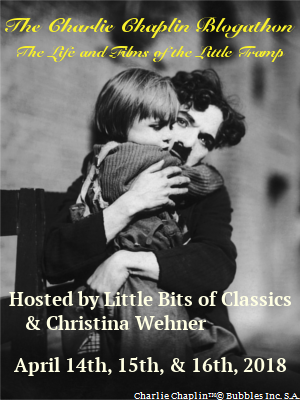 I’ve read that The Bride of Lammermoor is quite different from Sir Walter Scott’s usual books, but since the only other one I’ve read is Ivanhoe I can’t say if that’s true. The Bride of Lammermoor is much shorter, though, and Gothic, romantic, and mystical. There are a lot of comparisons to be made with Shakespeare’s “Macbeth.”
I’ve read that The Bride of Lammermoor is quite different from Sir Walter Scott’s usual books, but since the only other one I’ve read is Ivanhoe I can’t say if that’s true. The Bride of Lammermoor is much shorter, though, and Gothic, romantic, and mystical. There are a lot of comparisons to be made with Shakespeare’s “Macbeth.”
It was published in 1819, but the story is set sometime in the late sixteen hundreds. Edgar, Master of Ravenswood, has lost his ancestral lands (rather, his father lost them because he supported James VII of Scotland, who was also James II of England – the king who was ousted during the Glorious Revolution in 1688). The new owner of the Ravenswood estate is Sir William Ashton, a malleable and shrewd lawyer who always has his finger to the political wind.
Ravenswood is a stern and fierce young man who desires to revenge himself on Sir William and now lives in the tower of Wolfscrag, which was once a fortress and looms over the ocean in dilapidated, Gothic splendor. However, instead of revenging himself, he saves Sir William and his daughter, Lucy Ashton, from attack by some kind of wild cow and Lucy and Edgar fall in love. The two engage themselves secretly, despite deep forebodings from an old former servant of Ravenswood’s named Alice, various portends (a dead raven falls at Lucy’s feet when they engage themselves to each other) and a warning from Ravenswood’s one remaining servant, Caleb.
Sir William is not actually entirely opposed to the match, since it is possible that Ravenswood’s uncle, the Marquis of A_______(we never do find out what the A________ stands for) might be able to raise Ravenswood up when his political party regains power in the Scottish parliament. But Lady Ashton is opposed. As soon as she arrives in the story, Sir William almost completely disappears, becoming a henpecked, ineffectual husband. Lady Ashton reminds many people of Lady Macbeth, although she does not love her husband as Lady Macbeth did; but she is the driving force behind him, the one he listens to, who is willing to stop at very little to get what she wants. And what she does not want is for Lucy to marry Ravenswood; she wants her to marry another young man called Bucklaw. She sets out, therefore, quite deliberately, to break her daughters resolution to honor her betrothal to Ravenswood and if breaking her resolution means breaking her mind, Lady Ashton does not balk.
The book ends in tragedy, madness, death, stabbing, and broken family lines. However, despite the inevitable sense of tragedy, it is not a depressing read. The chief fun comes from Ravenswood’s devoted family servant, Caleb Balderstone. He will do anything to keep up the family honor, including lying, stealing, and arson. It is always a source of amused suspense to both the reader and to Ravenswood to see how Caleb will find Ravenswood’s next meal or provide for his guests or excuse his lack of provisions or even prevent Ravenswood from having guests so that no one will know the extreme poverty Ravenswood has been reduced to. But his devotion is touching because of his genuine concern for his master, as well as the family honor.
 Scott seems to be drawing, self-consciously, from “Macbeth.” They are both tales in Scotland, there is a woman who is the power behind the husband who causes most of the evil, there are mighty storms with thunder and rain, specters appear, and Scott even has three old women like the three Weird Sisters in “Macbeth,” though Scott’s three women are being led by one, Ailsie Gourlay, who seems to know who is marked out for death and even helps Lady Ashton to poison Lucy’s mind.
Scott seems to be drawing, self-consciously, from “Macbeth.” They are both tales in Scotland, there is a woman who is the power behind the husband who causes most of the evil, there are mighty storms with thunder and rain, specters appear, and Scott even has three old women like the three Weird Sisters in “Macbeth,” though Scott’s three women are being led by one, Ailsie Gourlay, who seems to know who is marked out for death and even helps Lady Ashton to poison Lucy’s mind.
The book ends up being part Gothic, part comic, and also part political as people scheme to be part of the winning party while such troublemakers as Craigengelt tries to persuade Bucklaw and Ravenswood to assist the exiled James II in France. It was a little hard to follow all the political aspects, but it didn’t fundamentally diminish my understanding of the story. Another difficult aspect of the book is the language. Many of the Scottish characters, such as Caleb and Ailsie Gourlay and Alice, speak in a Scottish dialect that is hard to decipher.
The books central couple make a very curious romantic pair, because they are not particularly suited. She is romantic-minded (she loves the stories, myths and legends) and very meek and pliable. He is stern, proud and energetic. They seem bound to each other less because they love each other (they hardly know each other), but because in a moment of heady-emotion, they became betrothed. She is sticking to it for the romance of it and he because he is honorable.
One complaint I do have is that the book appears to be rushed at the end. Just when the book should be getting most dramatic is when it wraps up. Plot Spoilers! When Lucy goes mad and stabs her husband Bucklaw and when Ravenswood dies afterwards, it is recounted almost as if it were a postscript. However, it is still not a story that is easily forgotten; it seems to imprint itself very clearly on the imagination. End Plot Spoiler.
Walter Scott is said to have derived the story from life and it was a story that Scott heard from many different people, including his mother, and he always thought that his mother told it particularly well. He was worried that the story would lose something in translation from an oral story to a written one. He thought a full-length novel wouldn’t have nearly the impact of, as he put it, a story told in thirty minutes by the fire. I see what he means. Sometimes, when a story captures our imagination, it can be hard to actually do it justice in a novel, where you have to provide so many more details that you do not have to provide in an oral tale. I think the power of his story is more in the story than in the actual writing – though there is nothing wrong with his writing; it is skillfully amusing and evocative. However, this might be why there are many details that seem to get lost in the book that Scott neglects to give us, like why Ravenswood does not receive Lucy’s letters, but suddenly gets them later. This is a story, not about details or human motivations, but about the romance of the story itself. It is a book that cries out to be read during the evening or night, on a rainy day, or during a storm.






